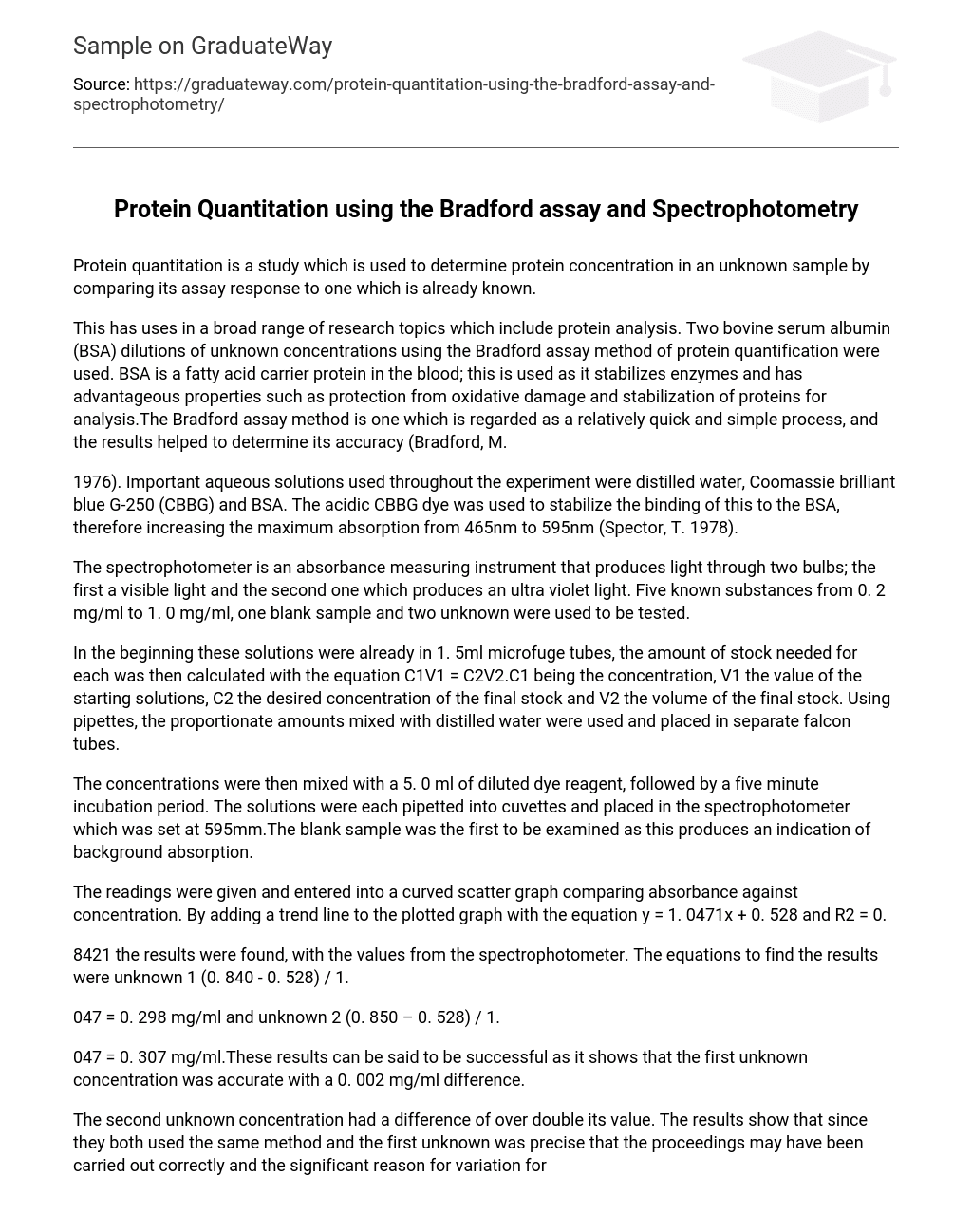Protein quantitation is the process of comparing the assay response of an unknown sample to that of a known sample in order to determine its concentration.
This text explores the different applications of protein analysis in diverse research areas. It specifically highlights the utilization of the Bradford assay method to ascertain unknown concentrations of two BSA dilutions. BSA, a blood protein that acts as a carrier for fatty acids, is favored due to its capacity to stabilize enzymes and safeguard proteins from oxidative harm. The simplicity and swiftness of the Bradford assay method are well-known, and the outcomes derived from this technique have assisted in evaluating its precision (Bradford, M.).
Important aqueous solutions used in the experiment included distilled water, Coomassie brilliant blue G-250 (CBBG), and BSA. The use of the acidic CBBG dye stabilized its binding to the BSA, leading to an increased maximum absorption from 465nm to 595nm (Spector, T. 1978).
The spectrophotometer, which uses two bulbs for visible and ultraviolet light, is a device used to measure absorbance. In the experiment, there were five substances with concentrations ranging from 0.2 mg/ml to 1.0 mg/ml, along with a blank sample and two unidentified substances.
Initially, the solutions were held in 1.5ml microfuge tubes. The equation C1V1 = C2V2 was used to calculate the required stock amount for each solution. This equation includes variables like C1 (concentration), V1 (volume of starting solution), C2 (desired concentration of final stock), and V2 (volume of final stock). Pipettes were used to combine the necessary quantities with distilled water and then move them into separate falcon tubes.
After that, the concentrations were mixed with a 5.0 ml diluted dye reagent and incubated for five minutes. Then, each solution was pipetted into cuvettes and placed in the spectrophotometer set at 595mm. The first sample examined was the blank sample, which indicates the background absorption.
Readings were taken and plotted on a curved scatter graph, illustrating the relationship between absorbance and concentration. A trend line with the equation y = 1.0471x + 0.528 and an R^2 value of 0 was added to the graph.
8421 results were recorded using a spectrophotometer. The equations for obtaining these results were unknown 1 (0.840 – 0.528) / 1.
047 = 0.298 mg/ml and unknown 2 (0.850 – 0.528) / 1.
047 = 0.307 mg/ml. These findings indicate a successful result, with only a 0.002 mg/ml variance from the initial unknown concentration.
The second unknown concentration had a difference that was more than twice its value. The results indicate that both unknowns were processed using the same method, and the first unknown showed precision. This suggests that the procedures may have been executed correctly. The most notable factor causing variation in the second unknown could be human error, particularly through improper pipetting technique during dilutions and mishandling of the cuvette.





